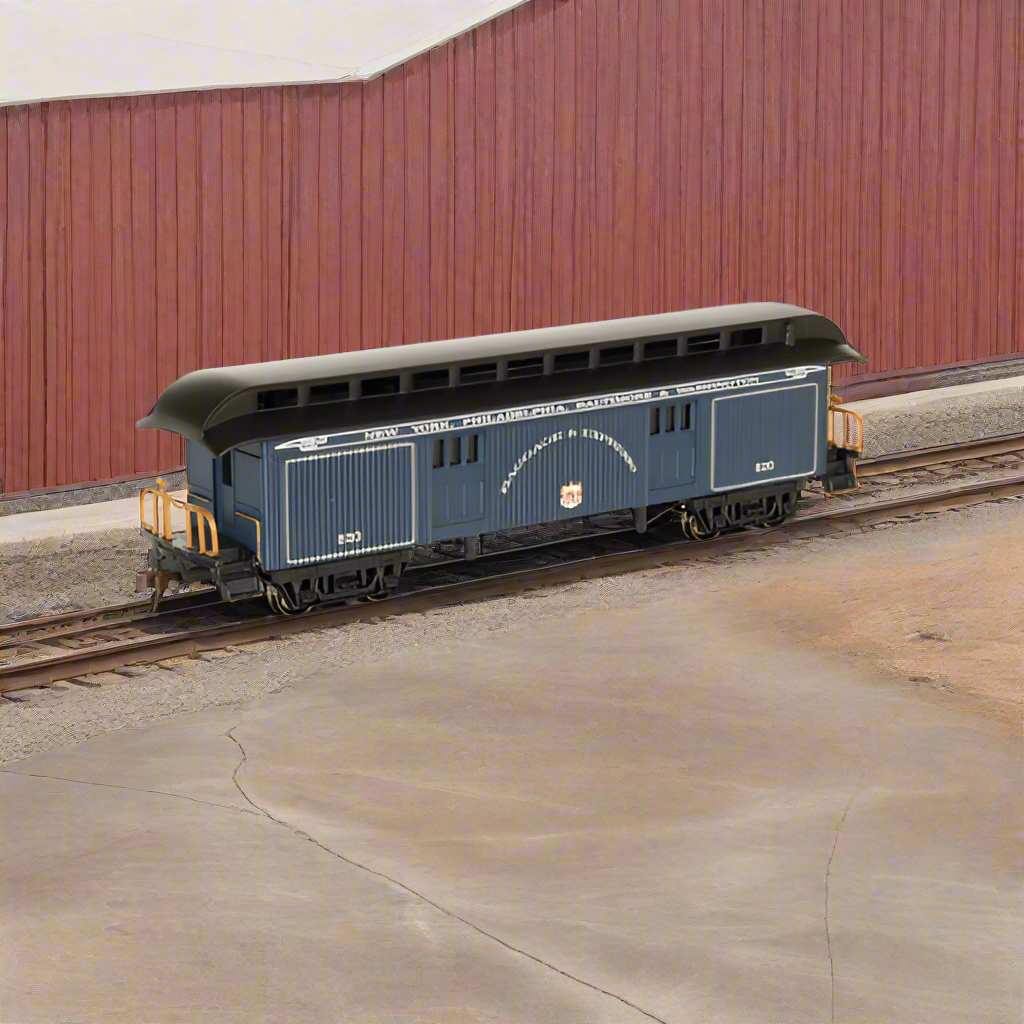
Bachmann, 15305, HO Scale, 1860-1880 Era Baggage Car, Baltimore and Ohio (Royal Blue)
- Low stock - 1 item left
About the Prototype
Step aboard the utilitarian marvel of early railroading—the classic baggage car, a vital workhorse of passenger trains that seamlessly blended functionality with the elegance of steam-era travel. For the Baltimore & Ohio Railroad, this car was an indispensable part of the famed "Royal Blue Line," connecting Baltimore and Washington with New York in style. Introduced in the mid-19th century, baggage cars were purpose-built to handle the logistics of rail travel, providing a secure and organized space for luggage, parcels, and even mail. Their importance in rail operations made them indispensable to trains across the United States, with designs evolving to meet the growing needs of railroads and passengers.
Positioned directly behind the locomotive or near the front of the train, the baggage car served as the hub of efficiency for the Royal Blue Line. Equipped with large sliding doors on each side, these cars allowed for swift loading and unloading, even during brief station stops. Inside, racks, bins, and hooks ensured items were safely stowed, while clerks managed the flow of goods and correspondence. The car’s durable construction, often featuring wood in early designs and later transitioning to steel, ensured it could withstand the rigors of daily use.
On routes like the Royal Blue Line, which catered to both business travelers and tourists, the baggage car played a crucial role in ensuring a seamless journey for passengers and the efficient transport of goods. Mail sacks were often sorted en route, and passengers could rest assured their belongings were handled with care.
By the early 20th century, baggage cars began transitioning from wood to steel construction of the heavyweight era, offering greater durability and safety. They remained a staple of passenger trains until mid-century, when railroads shifted focus to intermodal transport and centralized mail processing. Today, these cars are celebrated as symbols of the steam era’s ingenuity and adaptability, their legacy preserved by museums and model railroading enthusiasts.
The baggage car represents the unseen backbone of rail travel, tirelessly working behind the scenes to ensure passenger convenience and logistical precision. On iconic services like the Baltimore & Ohio's Royal Blue Line, it was a vital component of a world-class rail experience, embodying the efficiency and charm of a bygone era.
About the Model
Features:
• blackened metal wheels
• body mounted couplers
• non-magnetic axles
A little bit about the Royal Blue

The Royal Blue was more than just a train—it was a symbol of the Baltimore and Ohio Railroad’s (B&O) dedication to luxury and innovation. Launched in 1890, the Royal Blue became the flagship passenger service connecting New York City and Washington, D.C., providing travelers with a seamless and refined rail experience. This legendary train was part of the Royal Blue Line, a name the B&O proudly used from 1890 to 1917 to signify its improved passenger service across the bustling Northeast Corridor. Variants like the Royal Limited and Royal Special highlighted the individuality of the Royal Blue trains, each catering to distinct needs and schedules.
The Royal Blue Line was the result of a unique partnership between the B&O, the Reading Railroad, and the Central Railroad of New Jersey. Together, they created a premier service that linked major intermediate cities, including Philadelphia, Wilmington, and Baltimore. These stops not only facilitated travel but also contributed to the economic and social vibrancy of the region.
However, the world was changing, and so were cultural sentiments. By 1917, as World War I shook Europe and associations with royalty became less favorable, the B&O discreetly retired the Royal Blue Line name from timetables. Trains that once proudly bore the Royal Blue designation were rebranded, with the Royal Limited becoming the National Limited, expanding westward from Washington to St. Louis via Cincinnati. Yet the spirit of the Royal Blue Line remained embedded in the hearts of those who had experienced its grandeur.
The economic challenges of the Great Depression prompted the B&O to revive the glory of the Royal Blue name in 1935, reintroducing the train between New York and Washington to harken back to its pre-war elegance. This revival was short-lived, however, as the changing dynamics of rail travel eventually led to the decline of such services. On April 26, 1958, the B&O discontinued all passenger operations north of Baltimore, including the once-celebrated Royal Blue.
Today, the Royal Blue stands as a monument to the golden age of railroading—a time when the journey was as significant as the destination. Its legacy endures among rail enthusiasts and historians, reminding us of an era defined by craftsmanship, ingenuity, and the timeless romance of travel.




